Manufacturing
If you work in the manufacturing industry, you are twice as likely to be involved in a workplace incident than any other industry.
Top causes of fatalities are vehicle incidents, being hit by moving objects and long term contact with chemicals. Below you will find information about recent serious incidents and safety information to help protect you and your workplace.
Labourer burned in forklift fire (30 March 2022)
A 62-year-old labourer suffered burn injuries to his face and hands while using a forklift to dip scaffold components into a large skip bin filled with paint and thinners. The forklift came into contact with the skip bin, which may have caused a spark, resulting in fire engulfing the skip bin and causing extensive damage to the forklift.
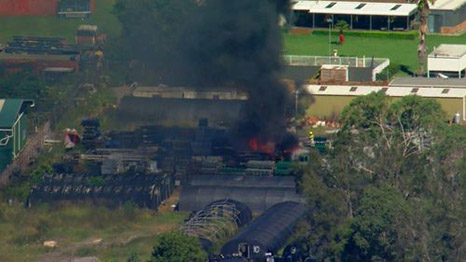
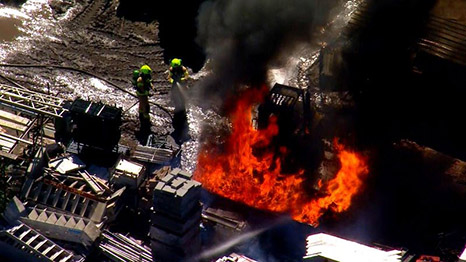
Incident scene (photo source 9 news).
Safety Information
Consider ‘reasonably practicable’ control measures to manage the risks associated with working with flammable liquids whilst painting scaffold components.
Ensure:
- a risk assessment is performed before any work is undertaken
- current safety data sheets (SDS) are obtained for all chemicals used and they are readily available to workers and all workers understand the relevant information
- instruction, training, and supervision is provided to all workers on the safe use, storage, and handling of hazardous chemicals
- appropriate personal protective equipment (PPE) is used for the task
- forklift operators hold valid high risk work licences (HRWL) - class LF
- potential ignition sources are considered, for example plant, electrical leads, portable generators
- intrinsically safe plant and equipment are used
- consideration of the receptacle/container being used to store paint and thinners for dipping scaffolding components
Related guidance material
- Flammable substances - SafeWork NSW
- Managing risks of hazardous chemicals in the workplace - SafeWork Australia
- Managing risks of exposure to solvents in the workplace - SafeWork SA
- High risk work licenses information – SafeWork NSW
- Forklift safety information – SafeWork NSW
Further information
Worker fatally crushed by stone slabs (20 August 2022)
A 56-year-old warehouse worker sustained fatal injuries when he was crushed beneath two stone slabs at a warehouse in Beresfield. The stone slabs, with a combined weight of approximately 600kg, fell from an A-frame storage system landing on top of the worker.
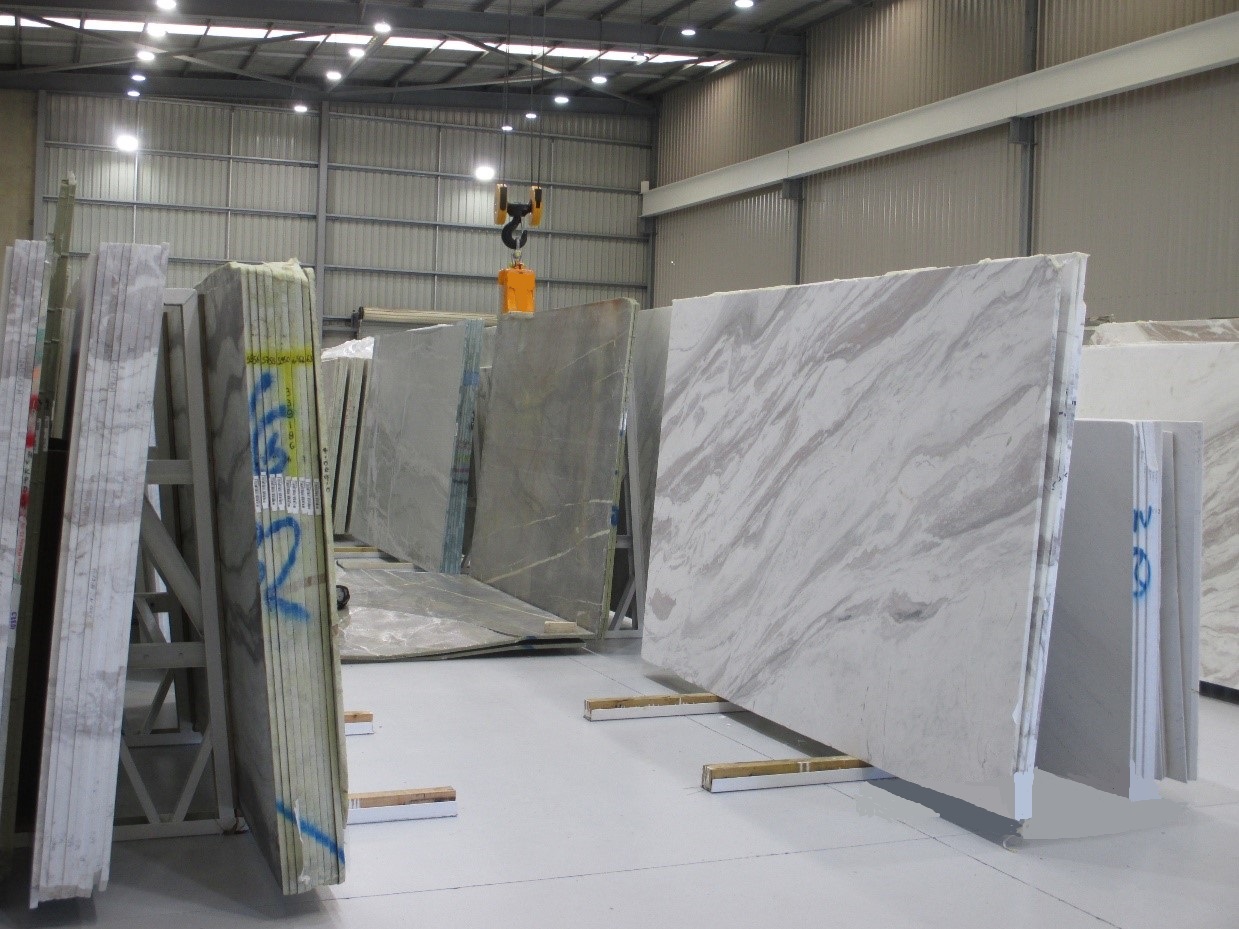
Safety information
This is the second incident involving stone slab storage and movement within the last 8 months.
Workers or others in close proximity to stacked stone slabs are at risk of severe or fatal injuries by being crushed, trapped, or cut by falling slabs. Stone slabs or materials which have been stacked on their edges, are at high risk of falling when being handled or moved if the sheets are not adequately supported by suitable racking or transport frames.
Consider ‘reasonably practicable’ control measures to manage the risks associated with handling and storage of stone slabs.
Ensure:
Storing the sheets or slabs
- store the sheets or slabs on an A-frame, truss, post frame or other purpose-designed racking system, and ensure that the safe load limit of the storage system is not exceeded
- once stored, use appropriate restraints to retain sheets or slabs in position and prevent later movement due to wind, impact, or other actions
- if stored on a post frame, both posts must be adequately positioned to prevent the slabs from falling forward and must be re-positioned progressively as the material is removed from the frame
- remain clear of hazard (fall) zones when lifting and handling sheets
- always stand in front of the posts which break the fall of the sheets or slabs. Never stand between the sheets or slabs and the posts
- use appropriate lifting equipment when handling sheets – do not exceed the working load limit of any lifting device
- ensure all workers are adequately trained and supervised for the tasks they are performing, the nature of the risks associated with the work, and the control measures implemented to deal with these risks
- use appropriate personal protective equipment (e.g. gloves).
Lifting and handling sheets or slabs
- remain clear of hazard (fall) zones when lifting and handling sheets
- always stand in front of the posts which break the fall of the sheets or slabs. Never stand between the sheets or slabs and the posts
- use appropriate lifting equipment when handling sheets – do not exceed the working load limit of any lifting device
- ensure all workers are adequately trained and supervised for the tasks they are performing, the nature of the risks associated with the work, and the control measures implemented to deal with these risks
- use appropriate personal protective equipment (e.g. gloves).
Related guidance material
- Hazardous Manual Tasks Code of Practice – Safe Work Australia
- Working with sheet materials safety alert – SafeWork NSW
- Storage and handling of sheet materials – WorkSafe QLD
- Workers injured by stone slabs alert – WorkSafe QLD
Further information
Forklift truck tip over fatality (2 May 2022)
A 31-year-old worker was driving a forklift truck loaded with a pallet of sheet metal in the yard of a manufacturing plant when it collided with a fixed object and overturned. The worker sustained fatal crush injuries.
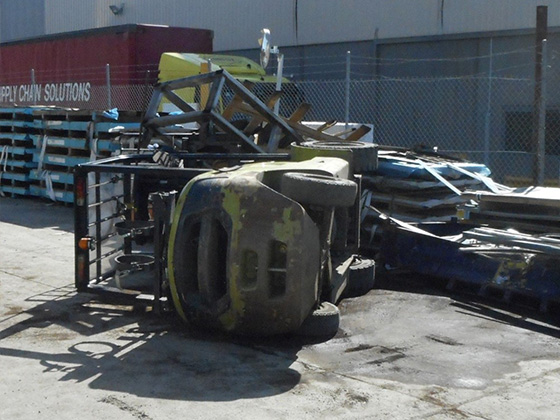
The forklift involved in the incident.
Safety information
Every year forklift trucks are involved in workplace deaths and injuries resulting in substantial financial and human costs for workers, industry, and the community. The three main reasons workers are killed or seriously injured in forklift truck incidents are:
- being hit or crushed by a forklift
- being hit or crushed by a load that the forklift is moving
- being crushed in a forklift tip-over.
Before operating a forklift truck, you:
- must hold a valid high risk work licence (HRWL) - class LF
- must review the manufacturer’s instructions to ensure the forklift is operated safely in a manner for which it was designed
- must be trained on the specific type of forklift you are using so that you are familiar with the operating controls and understand any limitations
- should always conduct pre-start and operational safety checks to confirm the forklift is safe to operate
- must wear the required PPE (personal protective equipment) for the task you are undertaking and the environment you are working in
- must be fit for work. This includes not being under the influence of drugs or alcohol, and ensuring you are adequately rested
- should inspect the work area to identify any potential hazards in the work zone
- should assess the load to determine if the forklift configuration is designed to lift the load or whether a lifting attachment is better suited to maintain control of the load.
When operating a forklift, you:
- must follow any site safety rules, traffic management plans and safety instructions including any site-specific safe work method statements for the work being undertaken
- must wear a seatbelt, unless a risk assessment indicates it’s not safe to do so, and use all controls provided to prevent you being ejected from the forklift
- should drive at a safe speed, with respect to site speed limits, load size, ground, and weather conditions
- should avoid aggressive driving, braking, and steering, especially when turning
- should never turn sideways on ramps or other sloping surfaces
- ensure all loads are centred and secured
- must never overload the forklift
- should avoid driving with an elevated mast and load, unless you’re picking up or putting away the load
- should lower the fork arms to ground level, apply the parking brake, and ensure the drive controls are in neutral if you need to alight from the forklift
- should turn off the ignition and remove the key if leaving the forklift unattended.
If the forklift does tip over, attempting to jump from it is likely to cause serious crush injuries or death. In the event of a forklift tip over, you should:
- remain seated and not lean out of the forklift
- brace your feet, hold tight and lean away from the point of impact.
Businesses must:
- develop and implement safe systems of work
- ensure all workers operating a forklift have the appropriate HRWL and have received training on the type of forklift they are using
- not direct or allow a person who does not hold a HRWL to operate a forklift
- sight and hold a copy of the HRWL for all operators
- ensure the manufacturer’s instruction manual is made available to operators
- ensure all forklifts and associated equipment are regularly inspected, serviced, and maintained as per the manufacturer’s specifications
- ensure all operator protective devices installed on the forklift are maintained and used
- set up the workplace so that forklifts and people are separated, such as using barriers or guardrails
- ensure all workers and site visitors have completed a site induction
- clearly mark walkways and safe work zones
- ensure the forklift is fitted with warning devices to warn people of its movement
- ensure forklift operators only lift loads that are stable and secured on a pallet, or use an approved attachment if it is safer to do so
- ensure workers and all other people on site adhere to the traffic management plan and site safety rules
- ensure an emergency response procedure is developed and maintained, and all staff are trained in site safety procedures.
Related information
- Code of practice – Managing the risks of plant in the workplace (PDF, 1987.96 KB)
- Workplace traffic management guidance material – Safe Work Australia
- Forklift safety information – SafeWork NSW
- High risk work licenses information – SafeWork NSW
- People working around forklifts – Safety guide (PDF, 1242.39 KB) – SafeWork NSW
- Traffic management guide – warehousing – Safe Work Australia
Download the Incident Information Release as a PDF (PDF, 285.71 KB)
Manufacturing plant fatality (28 February 2022)
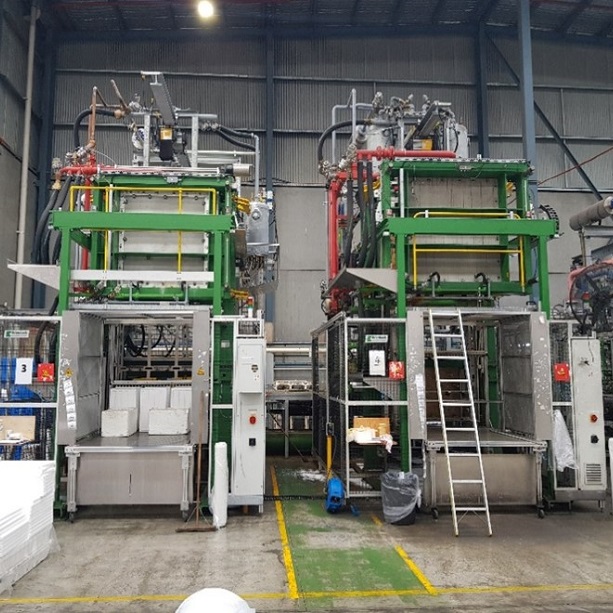
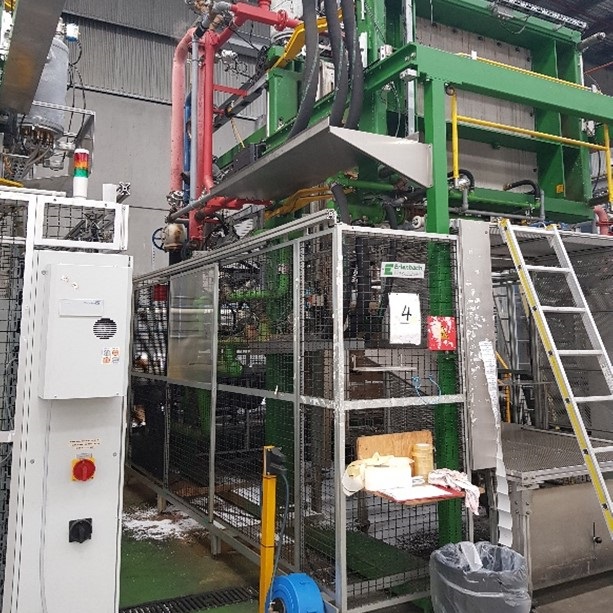
Polystyrene shape moulding machine involved in the incident
Safety Information
Implement ‘reasonably practicable’ control measures to manage the risks associated with plant maintenance.
Businesses must ensure:
- all maintenance activities are carried out in accordance with the manufacturer’s recommendations
- an assessment of the guarded plant, as well as the surrounding workplace, is undertaken to ensure that no structures or objects within the workplace provide workers with an ability to by-pass plant guarding. By-passing or disabling the guarding, whether deliberate or accidental, must be made as difficult as is reasonably practicable
- procedures are in place for isolating and locking out energy sources, and for dissipating stored energy, for example, electricity, hydraulics, pneumatics, before accessing hazardous areas.
Accessing plant
- if access to the area of plant is not necessary during operation, maintenance or cleaning, the guarding should have a permanently fixed barrier
- if access is necessary during operation, maintenance or cleaning, the guarding should have an interlocked physical barrier. Access to the hazardous area should only be possible when the hazard has been controlled by others means e.g., isolation.
Operating plant
If plant needs to be operated while being maintained or cleaned, the person with management or control of the plant must ensure:
- the operator’s controls:
- are designed for such purposes
- are operated only by the person carrying out the maintenance or cleaning, or where that is not reasonably practicable, by an authorised person
- allow the plant to be operated in such a way that eliminates risks or, if that is not reasonably practicable, minimises the risks so far as reasonably practicable, e.g., inching or jogging mode.
- procedures are in place to allow maintenance and cleaning, without risk to the health and safety of the person performing the work
- workers are trained in such procedures and are following them.
Subscribe to the SafeWork NSW manufacturing e-newsletter
Related information
- Work Health and Safety Regulation 2017 (Chapter 5, Division 7)
- Managing the risks of plant in the workplace - Code of Practice SafeWork NSW
- Leading safer manufacturing workplaces - SafeWork NSW
- Machine safety pack fact sheets - SafeWork NSW
Forklift truck crush fatality (2 December 2021)
A 61-year-old forklift truck operator sustained fatal injuries while moving cable drums. Prior to moving one of the cable drums, the operator alighted the forklift to retrieve a work document which was placed on the cable drum. The forklift moved forward causing the operator to be pinned between the load guard and the cable drum.
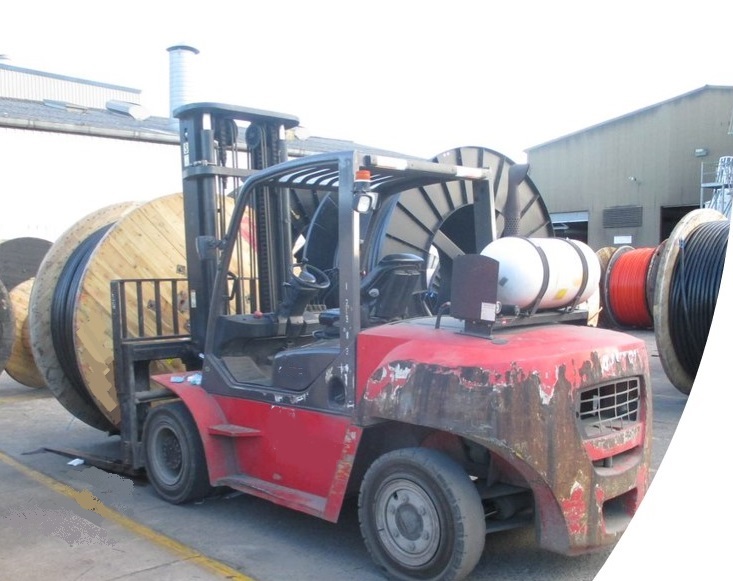
Safety information
Every year forklifts cause workplace deaths and injuries resulting in substantial financial and human costs for workers, industry, and the community. The three main reasons workers are killed or seriously injured in forklift incidents are:
- being hit or crushed by a forklift
- being hit or crushed by a load that the forklift is moving
- being crushed in a forklift tip-over
Consider ‘reasonably practicable’ control measures to manage the risks associated with operating forklifts.
Businesses must:
- develop and implement a safe system of work
- ensure all workers operating a forklift have the appropriate high risk work licence and have received training on the type of forklift they are using
- ensure the manufacturer’s instruction manual is made available to operators.
Before operating a forklift, you:
- must hold a current high-risk work licence (class LF)
- must have access to the manufacturer’s instructions to ensure the forklift is operated safely
- must be trained on the specific type of forklift so that you are familiar with the operating controls and understand any limitations
- should always conduct pre-start and operational safety checks to confirm the forklift is safe to operate.
When operating a forklift:
- always follow the forklift manufacturer’s instructions, site safety rules, traffic management plan and safety instructions from your employer
- assess the load to determine if the forklift configuration is designed to lift the load or whether a lifting attachment is better suited to maintain control of the load
- if you need to alight from the forklift, lower the fork arms to ground level, apply the parking brake, and ensure the drive controls are in neutral
- if left unattended, in addition to the above point, the forklift should be turned off and the ignition key removed, or the ignition control locked off to stop unauthorised use.
Practical tips to help keep workers safe:
Set up the workplace so that forklifts and people are separated, such as using barriers or guardrails. If separation is not possible:
- clearly mark walkways and safe work zones, and make sure your workers stick to them
- ensure the forklift is fitted with warning devices to warn people of its movement
- make sure forklift operators only lift loads that are stable and secured on a pallet otherwise use an approved attachment if it is safer to do so
- make sure your forklift operators wear a seat belt (if fitted)
- make sure your workers and visitors, including delivery drivers, stick to your traffic management plan and site safety rules
- talk to all your workers, including operators and those who work near forklifts about how to work safely around forklifts.
More information
- Managing the risks of plant in the workplace - Code of practice
- Forklift safety information – SafeWork NSW
- Traffic management guide – warehousing Safe Work Australia
- General guide for industrial lift trucks – Safe Work Australia
Worker crushed by stone slabs (5 November 2021)
A 29-year-old worker was seriously injured while assisting to move stone slabs/offcuts in a factory at Kogarah. The stone was stored on post frame racking. The task involved one worker operating a gantry crane while a second worker positioned the grab of the crane onto the stone. The second worker was standing in front of the stone when approximately nine slabs fell, trapping the worker from the waist down. The injuries sustained include pelvic and leg fractures, as well as serious internal injuries.
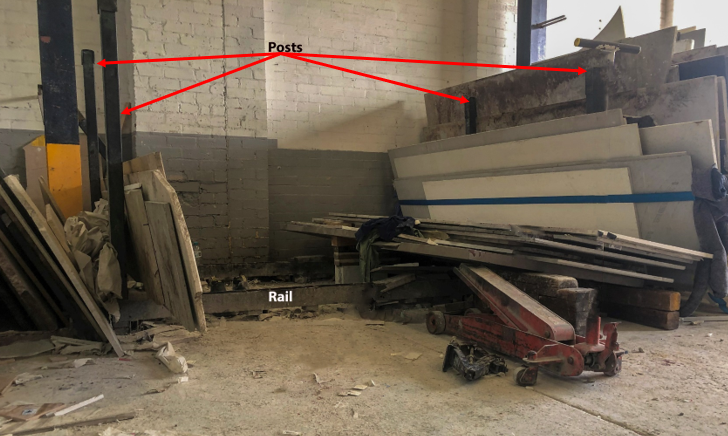
Safety Information
Workers or others near stacked sheet materials are at risk of being crushed, trapped, or cut by falling sheets.
The risk of severe or fatal injuries is high when materials, which have been stacked on their edges, are being handled or moved and the sheets are not adequately supported by suitable racking or transport frames.
Consider ‘reasonably practicable’ control measures to manage the risks associated with the handling and storage of sheet materials.
Storing the sheets or slabs
- store the sheets or slabs on an A-frame, truss, post frame or other purpose-designed racking system, and ensure that the safe load limit of the storage system is not exceeded
- once stored, use appropriate restraints to retain sheets or slabs in position and prevent later movement due to wind, impact or other actions
- if stored on a post frame, both posts must be adequately positioned to prevent the slabs from falling forward and must be re-positioned progressively as the material is removed from the frame.
Lifting and handling sheets or slabs
- remain clear of hazard (fall) zones when lifting and handling sheets
- never stand between the sheets or slabs, and the posts - always stand in front of the posts which break the fall of the sheets or slabs
- use appropriate lifting equipment when handling sheets - do not exceed the working load limit of any lifting device
- ensure all workers are adequately trained and supervised for the tasks they are performing
- use appropriate personal protective equipment (e.g. gloves).
More information
Steel girder crush fatality (6 July 2020)
A 34-year-old worker was killed after being crushed between two steel girders. As one of the girders, nearly 30 metres long and weighing almost nine tonnes, was being lifted by chain slings, it shifted, crushing the worker.
The two girders and bridge crane involved in the incident
Safety information
Consider ‘reasonably practicable’ control measures to manage the risks associated with lifting large or heavy loads.
Before any lift, make sure:
- the licensed dogger or rigger determine a safe lifting method, by calculating mass and selecting lifting equipment and slinging techniques
- the plant, attachments and lifting gear have been designed for that specific task, and inspected and maintained according to manufacturer’s recommendations
- the attachments and lifting gear are appropriate for the item of plant, and properly fitted
- exclusion zones are established and maintained to protect everybody from falling objects and moving plant
- all crane operators and users of lifting equipment are appropriately trained and correctly licensed (where required).
During the lift, make sure:
- no-one places themselves within the vicinity of a suspended load
- there are no obstructions and you can always see the load during the lift - if the load is outside your view, the lifting process must be directed by a licensed dogger or rigger
- all loads are lifted, carried and stored in a manner that ensures the safety of the plant, and the security of the load and any attachments.
More information
Forklift tip over fatality (5 May 2020)
Date of incident: 5 May 2020
A 31-year-old worker was killed when his forklift tipped over and crushed him, as he was driving down a driveway.
This is the second forklift fatality in NSW during the past five months.
Safety information
Before operating a forklift, you:
- must hold a current high-risk work licence (class LF), be familiar with the operating controls and know the limitations of the forklift
- should always complete a pre-start safety check, such as:
- fluid levels (hydraulic oil, brake fluid and water)
- seat and seat belts
- steering, brakes, park brake, lights and operating controls
- hydraulic operations, such as lift, tilt and sideshift
- tyre condition and pressures (if applicable)
- fork tynes and attachments
- load-rating plate and safety decals
- test drive and function tests.
- should check that regular maintenance and servicing has been carried out
- must not be not be under the influence of drugs or alcohol, or suffering from fatigue, injury or illness,
When operating a forklift, you must:
- wear a seatbelt, unless a risk assessment indicates it’s not safe to do so and other controls prevent you being ejected from the forklift
- drive at a safe speed, noting site speed limits, load size, ground and weather conditions
- avoid aggressive driving, braking and steering, especially when turning
- never turn sideways on ramps or other sloping surfaces
- avoid driving on an incline with the load facing downhill
- never overload the forklift
- never drive with an elevated mast and load, unless you’re picking up or putting away the load
- ensure all loads are centred and secured.
When the forklift is left unattended, the ignition key should be removed, or ignition control locked off to stop unauthorised people from using it.
If the forklift does tip over your instinct may be to jump. This is likely to cause serious crush injuries or death. In a forklift tip over, you should:
- remain seated and don’t lean out of the forklift
- brace your feet, hold tight and lean away from the point of impact.
More information
Worker trapped in machinery (19 February 2020)
Date of incident: 19 February 2020
A 34-year-old worker was shovelling ice into a horizontal screw auger conveyor at a poultry processing plant at Tahmoor when his leg became trapped.
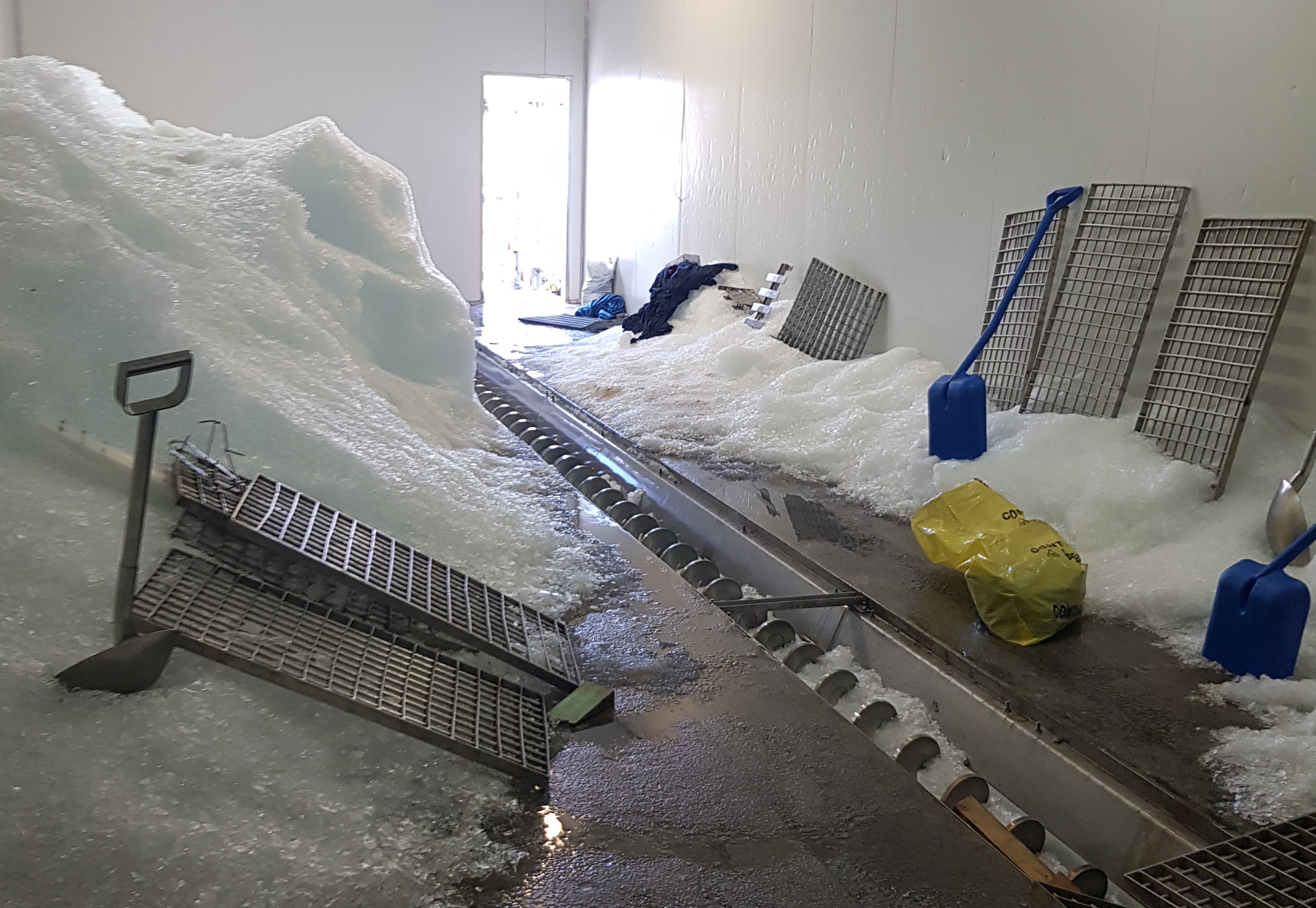
The investigation
The investigation
- SafeWork NSW inspectors responded to the incident.
- SafeWork NSW commenced an investigation to determine the cause and circumstances of the incident.
Safety information
Businesses are reminded of their duty to identify hazards and manage risks to health and safety in accordance with the provisions of the Work Health and Safety Act 2011 and Work Health and Safety Regulation 2017.
Consider ‘reasonably practicable’ control measures to manage the risks associated with working on or around machinery.
Make sure you separate workers from moving machinery by having:
- permanently fixed guarding, where access is not required during operation
- interlocked guarding, where access is required during operation
If these options are not practicable, make sure the guarding can only be removed by using a tool.
Also, make sure the guarding:
- is solid and securely mounted
- is difficult to by-pass or disable, whether deliberately or accidentally
- can be removed for maintenance and cleaning tasks – but the machine can’t be restarted until the guarding is replaced
- doesn’t create a new hazard
- doesn’t make the machine more difficult to operate, which may result in the guard being removed or disabled.
Further information
- Guide to machine safety
- Machine guarding safety pack (factsheets, posters, toolbox talk form)
- Machine safety videos
- Code of practice for managing the risks of plant in the workplace
Glass sheets crush worker (27 November 2019)
A 53-year-old worker fractured his femur and pelvis after being crushed by unrestrained glass sheets, which fell from an A-frame, when a sheet he was cleaning shattered while suspended from a crane.
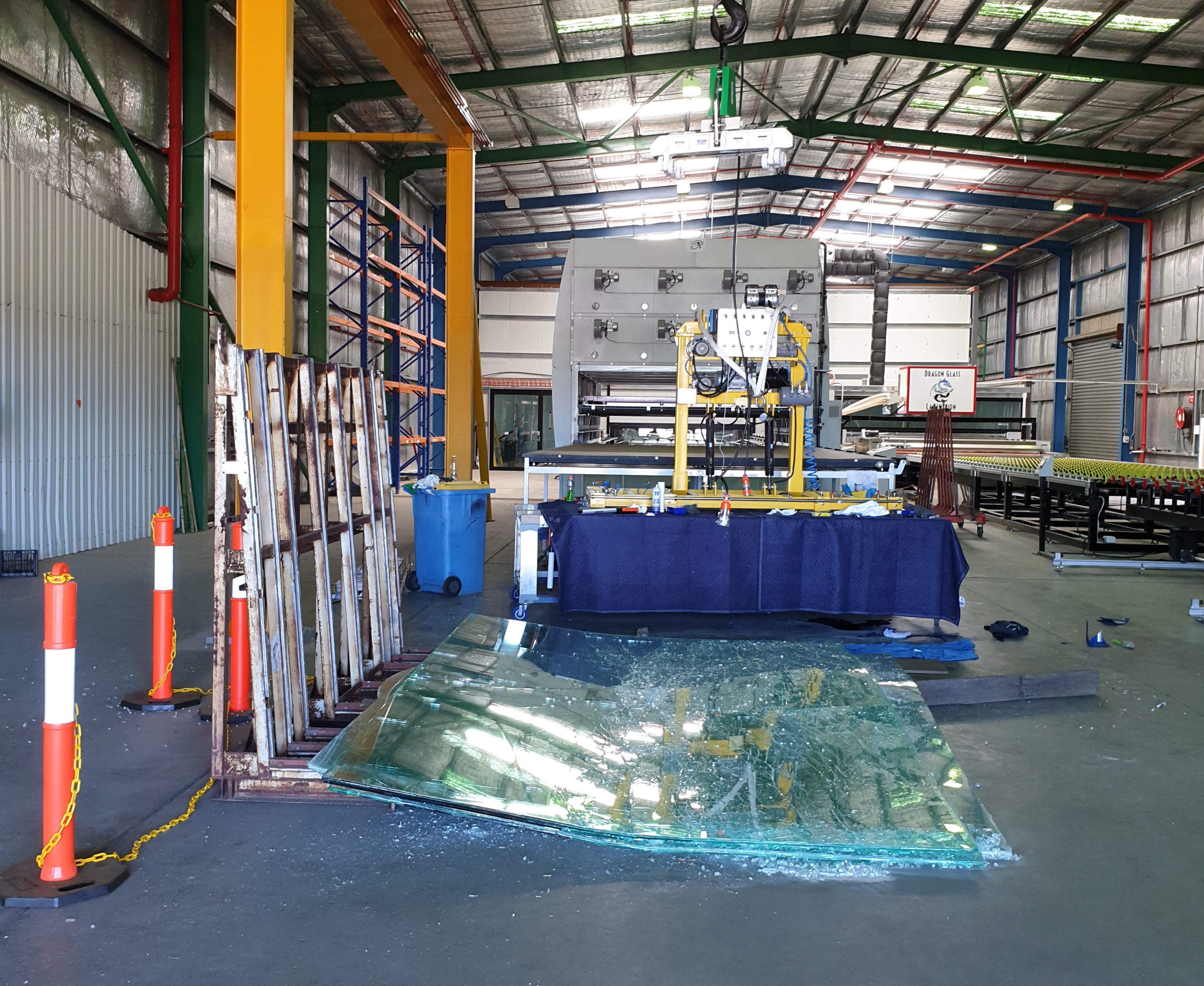
The investigation
- SafeWork NSW inspectors responded to the incident.
- SafeWork NSW commenced an investigation to determine the cause and circumstances of the incident.The investigation
Safety information
Businesses are reminded of their duty to identify hazards and manage risks to health and safety in accordance with the provisions of the Work Health and Safety Act 2011 and Work Health and Safety Regulation 2017.
Consider ‘reasonably practicable’ control measures to manage the risks associated with working with glass. Make sure:
- you never attempt to restrain glass by hand
- you use a rack or transport frame to securely store, cradle, lift, transport and restrain glass sheets
- all glass sheets are restrained
- you never stand in front of glass sheets when loading or unloading from a rack, trolley or A-frame
- you always have a plan when lifting glass sheets – consider the work area, and the size and weight of the sheets
- you use the right mechanical aid – glass lifting grab, clamp, vacuum or suction cup lifter –depending on the size and weight of the glass sheets
- you keep mechanical aids in good working order
- no-one works under a suspended load or in any potential fall zones
- workers not involved in moving, cleaning or storing glass are kept away from the work area.
Further information
Forklift fatality
Two maintenance workers were doing electrical work using a forklift and workbox at a manufacturing site in Barooga in the Riverina region. The forklift accidentally lifted the workbox, crushing one worker between the workbox and the underside of the roof. The worker sustained fatal head injuries.

The investigation
- SafeWork NSW inspectors responded to the incident.
- SafeWork NSW commenced an investigation to determine the cause and circumstances of the incident.
Safety information
Businesses are reminded of their duty to identify hazards and manage risks to health and safety in accordance with the provisions of the Work Health and Safety Act 2011 and Work Health and Safety Regulation 2017.
Consider ‘reasonably practicable’ control measures when using plant not specifically designed to lift people, such as forklifts fitted with workboxes. Make sure:
- the workbox is fitted with overhead protection if there is a risk of collision
- the forklift driver holds a current, valid licence
- the forklift data plate includes the workbox model number
- the workbox is securely attached to the forklift, according to manufacturer’s instructions
- workers are trained to use the workbox safely and follow emergency procedures, so occupants can be rescued if necessary
- the forklift is on a hard, flat, level surface, with the park brake applied, controls in neutral and the mast is vertical
- the path is clear of overhead obstructions – do a test lift with an empty workbox
- the forklift driver stays at the controls when someone is in the workbox
- workers wear a safety harness in the workbox, if there is a risk of falling from a height.
Further information
Factory crush fatality
A 32-year-old man sustained fatal injuries when he became caught in a timber pallet-making machine at a factory in St Marys.
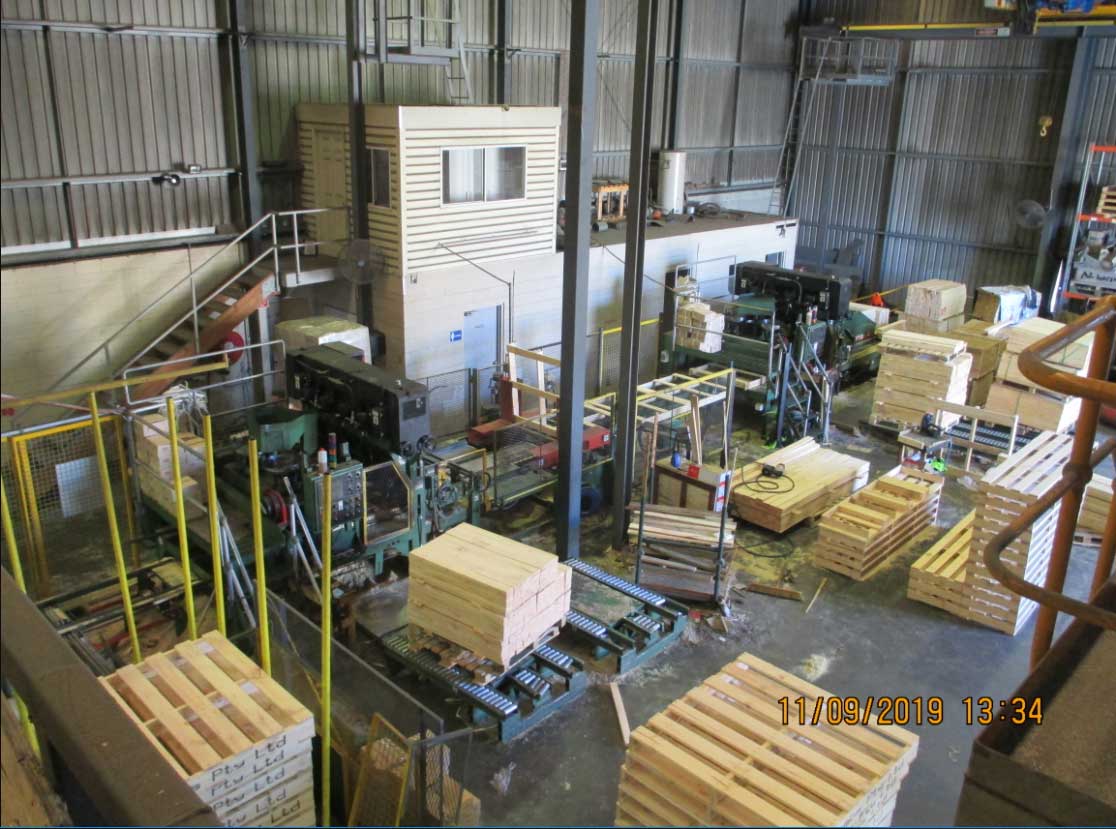
The investigation
- SafeWork NSW inspectors responded to the incident.
- SafeWork NSW commenced an investigation to determine the cause and circumstances of the incident.
Safety information
Consider ‘reasonably practicable’ control measures to manage the risk of plant in the workplace.
Use the following risk management process:
- Identify all foreseeable hazards associated with machinery, including mechanical hazards, such as entanglement, impact and cutting, and non-mechanical hazards, such as ergonomic, electrical, dust, confined spaces and the like.
- Manage the risks associated with these hazards.
- Use the most effective machine guarding, such as permanently fixed guards or interlocked guards, that don’t rely on human behaviour – make sure the guards can’t contact moving parts.
- Control access to dangerous areas, screen harmful emissions, minimise noise and prevent ejected parts from striking people.
- Program machine re-setting, particularly during maintenance, to prevent unexpected start-up or movement.
When working with machinery:
- Do a pre-start check before using, to confirm it’s safe.
- Make sure all guards are working.
- Use it for the purpose it was designed.
- Follow operating procedures when setting-up, operating, cleaning and maintaining.
- Don’t remove guards or bypass safety devices.
- Isolate the machine and make sure all stored energy has dissipated before accessing hazardous areas.
- When doing maintenance in ‘jogging mode’, make sure guards remain in place and are effective in managing risks.
